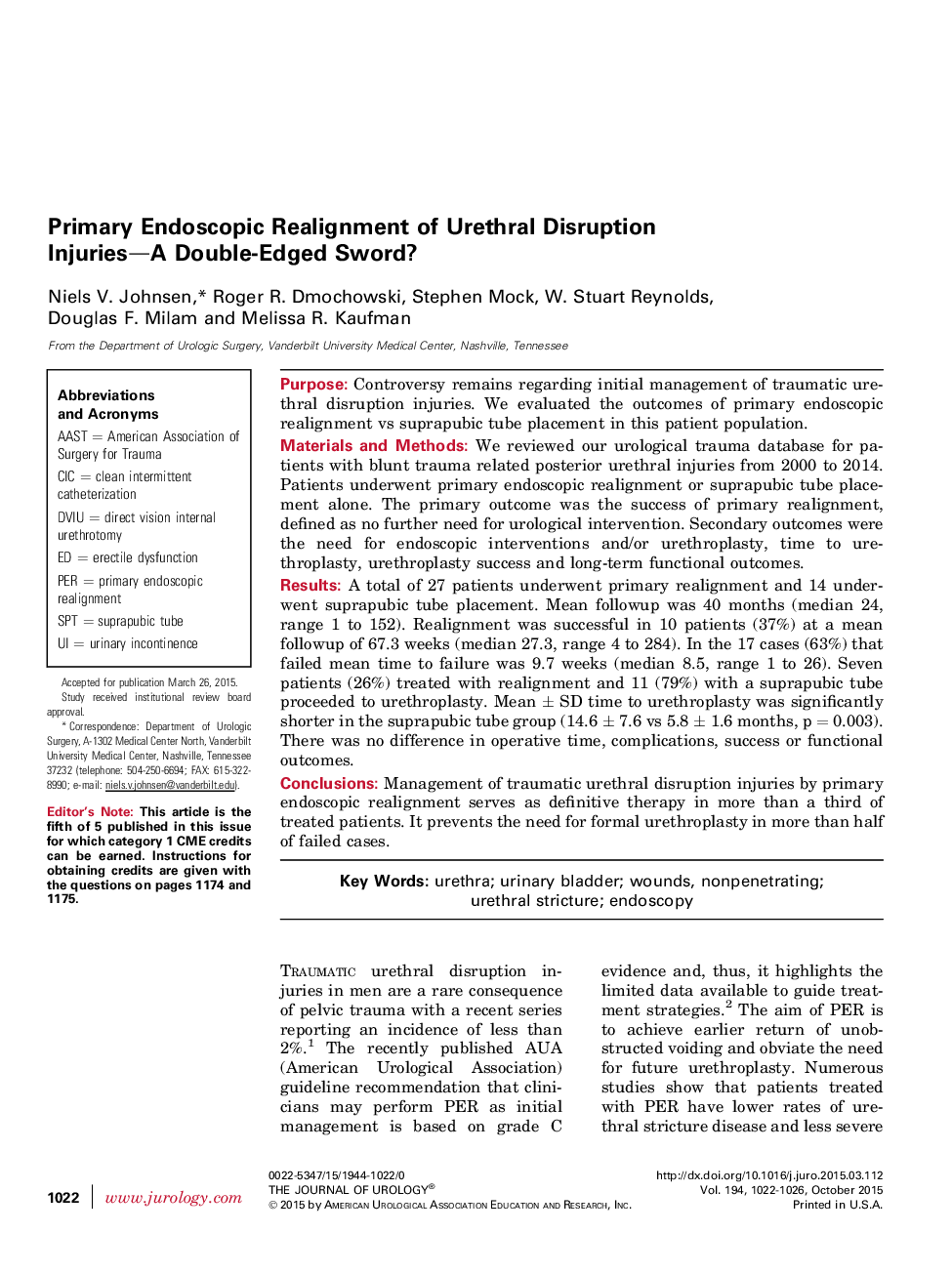| Article ID | Journal | Published Year | Pages | File Type |
|---|---|---|---|---|
| 3860007 | The Journal of Urology | 2015 | 5 Pages |
PurposeControversy remains regarding initial management of traumatic urethral disruption injuries. We evaluated the outcomes of primary endoscopic realignment vs suprapubic tube placement in this patient population.Materials and MethodsWe reviewed our urological trauma database for patients with blunt trauma related posterior urethral injuries from 2000 to 2014. Patients underwent primary endoscopic realignment or suprapubic tube placement alone. The primary outcome was the success of primary realignment, defined as no further need for urological intervention. Secondary outcomes were the need for endoscopic interventions and/or urethroplasty, time to urethroplasty, urethroplasty success and long-term functional outcomes.ResultsA total of 27 patients underwent primary realignment and 14 underwent suprapubic tube placement. Mean followup was 40 months (median 24, range 1 to 152). Realignment was successful in 10 patients (37%) at a mean followup of 67.3 weeks (median 27.3, range 4 to 284). In the 17 cases (63%) that failed mean time to failure was 9.7 weeks (median 8.5, range 1 to 26). Seven patients (26%) treated with realignment and 11 (79%) with a suprapubic tube proceeded to urethroplasty. Mean ± SD time to urethroplasty was significantly shorter in the suprapubic tube group (14.6 ± 7.6 vs 5.8 ± 1.6 months, p = 0.003). There was no difference in operative time, complications, success or functional outcomes.ConclusionsManagement of traumatic urethral disruption injuries by primary endoscopic realignment serves as definitive therapy in more than a third of treated patients. It prevents the need for formal urethroplasty in more than half of failed cases.
